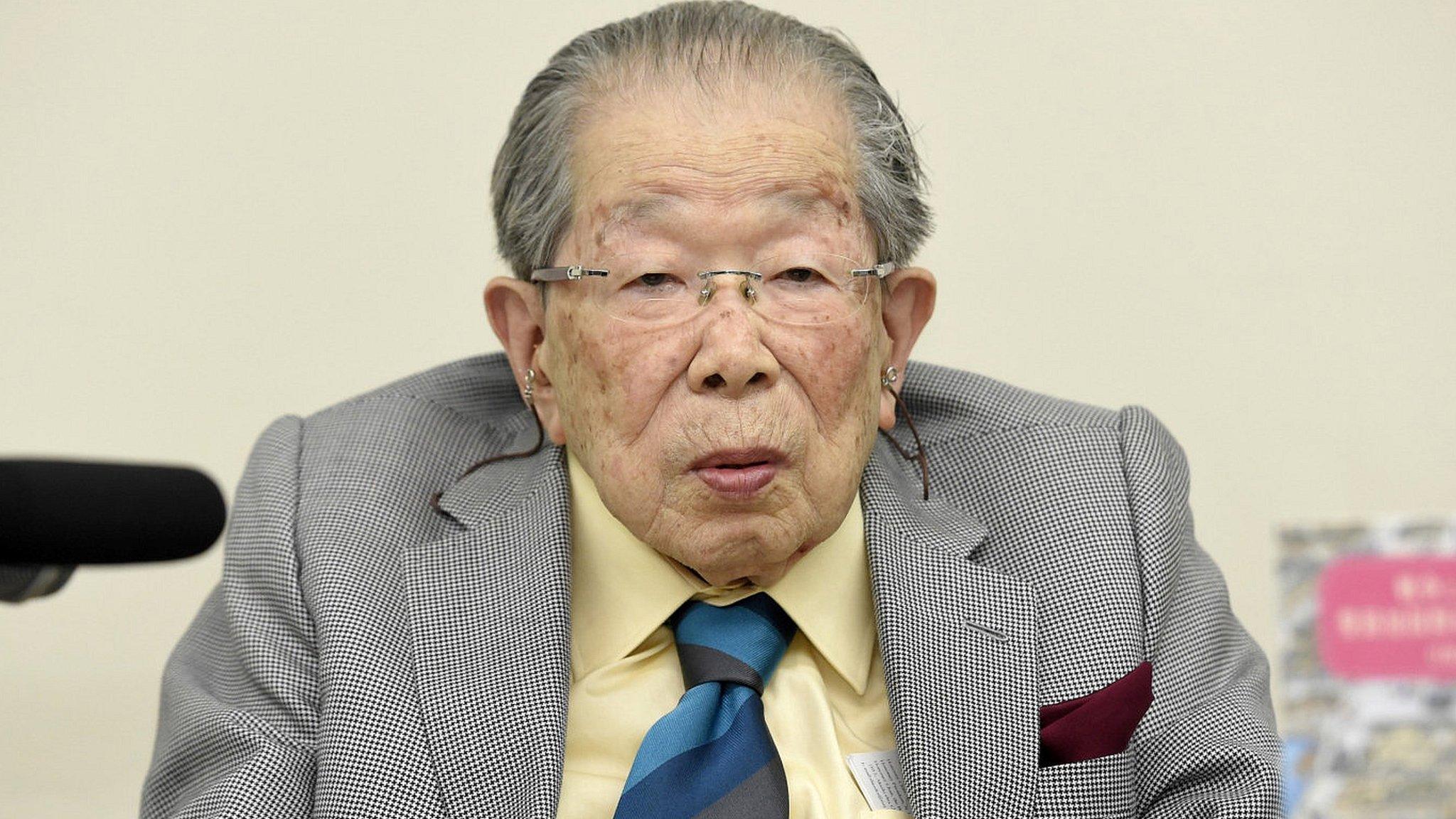Anger over a 100-year-old tribal artist at a tattoo show
- Published
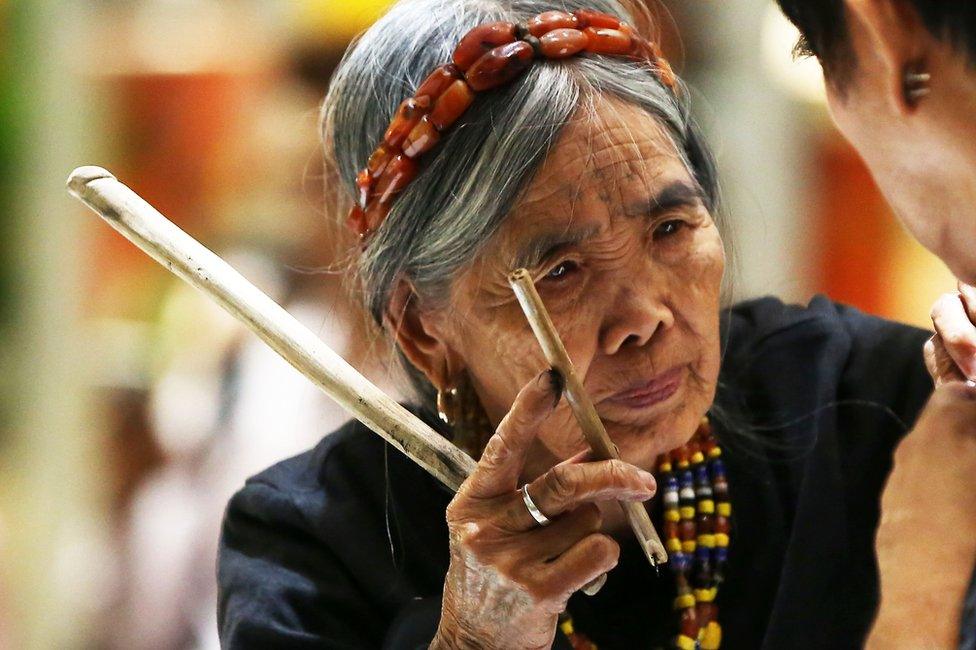
Tribal tattoo master Whang-Od was in Manila to showcase her craft
Excitement and fervour at a colourful tattoo show in the Philippines turned into outrage after a celebrated tribal artist's appearance was criticised for being "blatantly exploitive". But is it all so simple?
Legendary tattoo master Whang-Od was transported from her tribal village of Buscalan to the capital for the Manila FAME trade show, external, with the help of the Philippine Army and Air Force.
The centenarian, believed to be the country's oldest traditional tattoo artist, performed her ancient craft of hand-tapped Filipino tattoos at the weekend event.
Whang-Od hails from a remote mountain tribe in the hills of northern Kalinga province.
Her artistry has seen her credited with "single-handedly keeping an ancient tradition alive", external. Using just a few simple tools (thorns from a pomelo tree, bamboo sticks and coal), she has spent the past eight decades inking not only headhunting warriors and women of her tribe but a new wave of "tattoo tourists" like Carlo Mangoba, 34.
"My tattoo (of a serpent eagle) is a sign of honour and the mark of someone willing to make the difficult trip up north to meet the great master Whang-Od," he shared with BBC News.
"After all, she is already widely regarded as a great Filipina artist and icon."
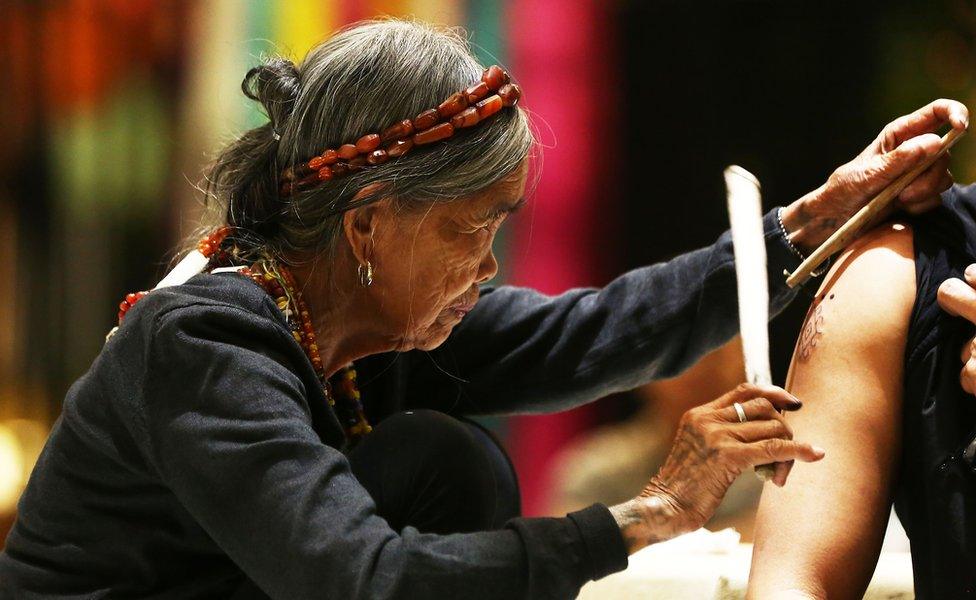
To many Filipinos, the elderly Whang-Od symbolises a dying ancient tradition
With a focus on "celebrating the rich cultural heritage of the Philippines", organising director Clayton Tugonon said that the institution wanted to support her uniquely traditional art.
"She symbolises the pure talent of Filipinos," he said in a statement to the BBC, adding that her invitation was "sought through proper channels", which included village elders and indigenous committees.
Bearing in mind her health and age, a "dedicated medical team" certified that she was fit to travel. Ambulances were also placed on standby throughout the two-day event, Mr Tugonon added.
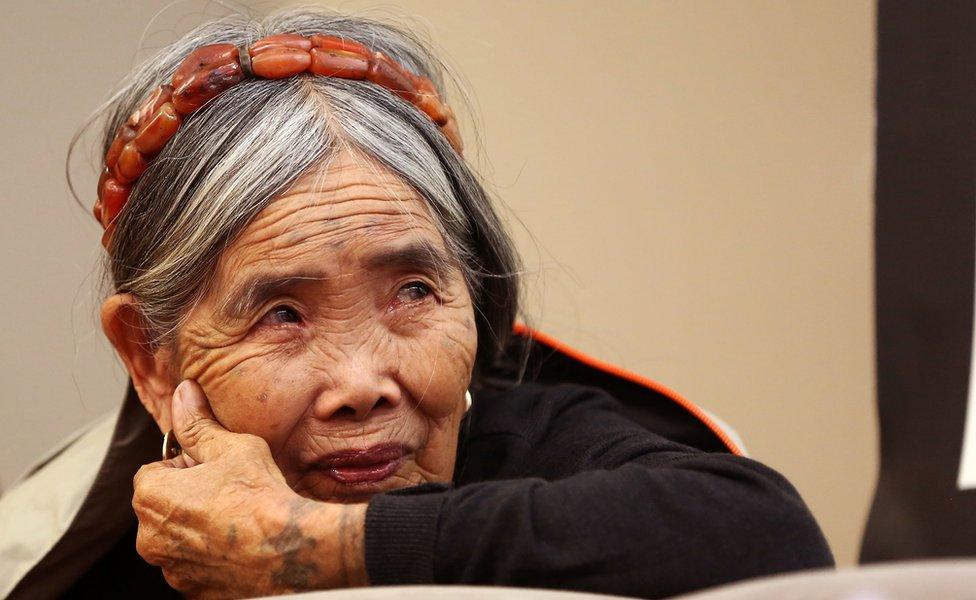
But was flying this tattoo legend out to Manila more beneficial to her art or the organisers?
The issues at play are difficult. While organisers have insisted that all money will go to her tribe, many netizens felt having the famed tribal tattoo master work at the trade show was "a blatant act of exploitation".
In a photo that swiftly went viral on Facebook, external, Whang-Od was photographed sleeping at a panel conference at the event.
It drew tens of thousands of angry reactions from Filipinos on the site, who speculated that she was being ill treated and "exploited" for her craft.
Allow X content?
This article contains content provided by X. We ask for your permission before anything is loaded, as they may be using cookies and other technologies. You may want to read X’s cookie policy, external and privacy policy, external before accepting. To view this content choose ‘accept and continue’.
"Whang Od is 100, a national treasure. And you made her go to Manila to tattoo 200 people for profit? This is sick and inhumane," said one netizen.
Medical care organised by the show was on hand should she need it, but many are also accusing the event of degrading a complex art.
"I've always wanted to get a tattoo from Whang Od but there was a part of me that said no. I hope Filipinos understand that this act distorts certain cultural norms and traditions," student RJ Barrete, external said.
Allow X content?
This article contains content provided by X. We ask for your permission before anything is loaded, as they may be using cookies and other technologies. You may want to read X’s cookie policy, external and privacy policy, external before accepting. To view this content choose ‘accept and continue’.
To tattoo artist Richard Tat, external, traditional tattoos like the ones perfected by Whang-Od take "a huge amount of time" and could prove tiring during a trade show.
"Traditional tattoos are done with different tools and they take impressive skills to learn and master. It sounds like she was exploited, from inking a few people to 200 to 300 in one day."
Allow X content?
This article contains content provided by X. We ask for your permission before anything is loaded, as they may be using cookies and other technologies. You may want to read X’s cookie policy, external and privacy policy, external before accepting. To view this content choose ‘accept and continue’.
But photojournalist Miguel Guzman was at the event to capture the excitement around the celebrated centenarian and he says it was not her lack of energy that was a concern.
"It was her first time in Manila. There were a lot of people who were excited to see her and to get tattoos from her and she was definitely happy. But I wouldn't say she was exploited. Organisers did take good care of her to ensure she was in good health," Mr Guzman explained.
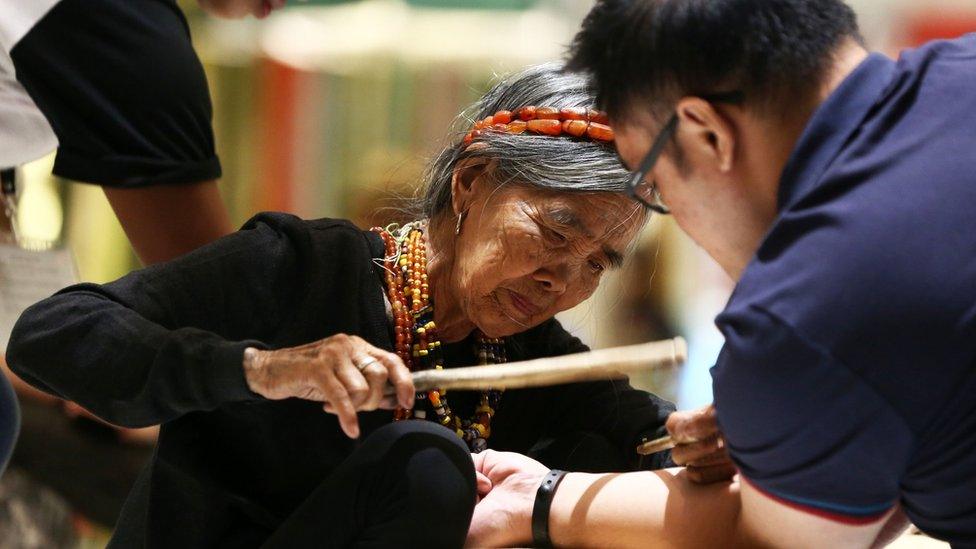
"I saw her myself and I wouldn't say she was tired. The problem I felt going on was the lack of translation and communication. A lot of people around her were speaking in English and Tagalog and where she's from, she can't understand that, she would only know her local dialect," he added.
Many might argue that such shows are one way of ensuring the tradition gets the attention it deserves to ensure its survival as a core part of the Philippine national heritage.
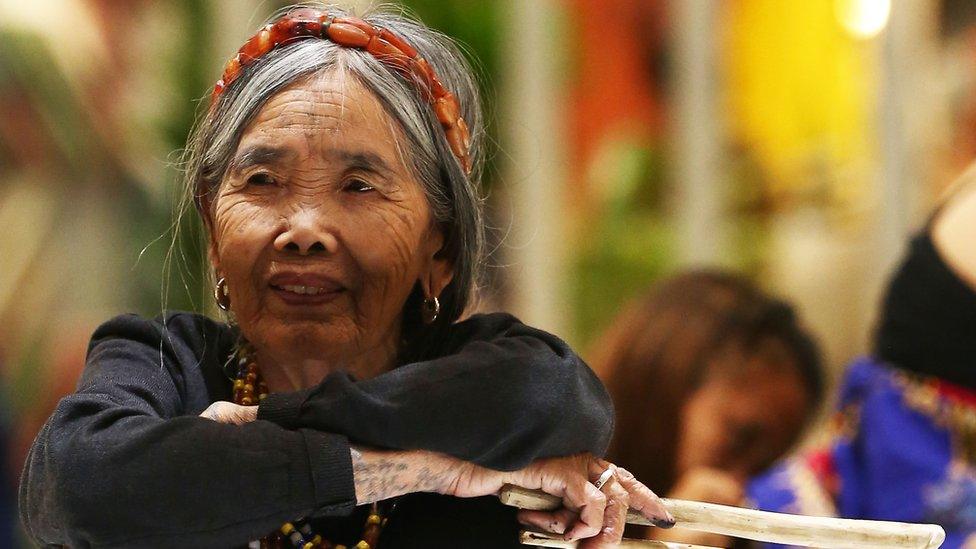
Many who saw her in Manila were charmed by her presence and her legendary tattoo skills
But for purists the value of the craft remains its exclusivity, a celebration of why it is just so hard to get. Carlos Mangoba had this to say:
"I feel sad for those in Manila who got tattooed by her during the event instead of making pilgrimage to see Apo Whang-od in her home village like I did. They clearly missed out on a full experience from such a master.
"After all, she is already widely regarded as a great artist and icon even before this trade show. In this sense, I think the Manila tattoo show needed her more than she needed them."
Additional reporting by Virma Simonette in Manila.
- Published27 May 2014
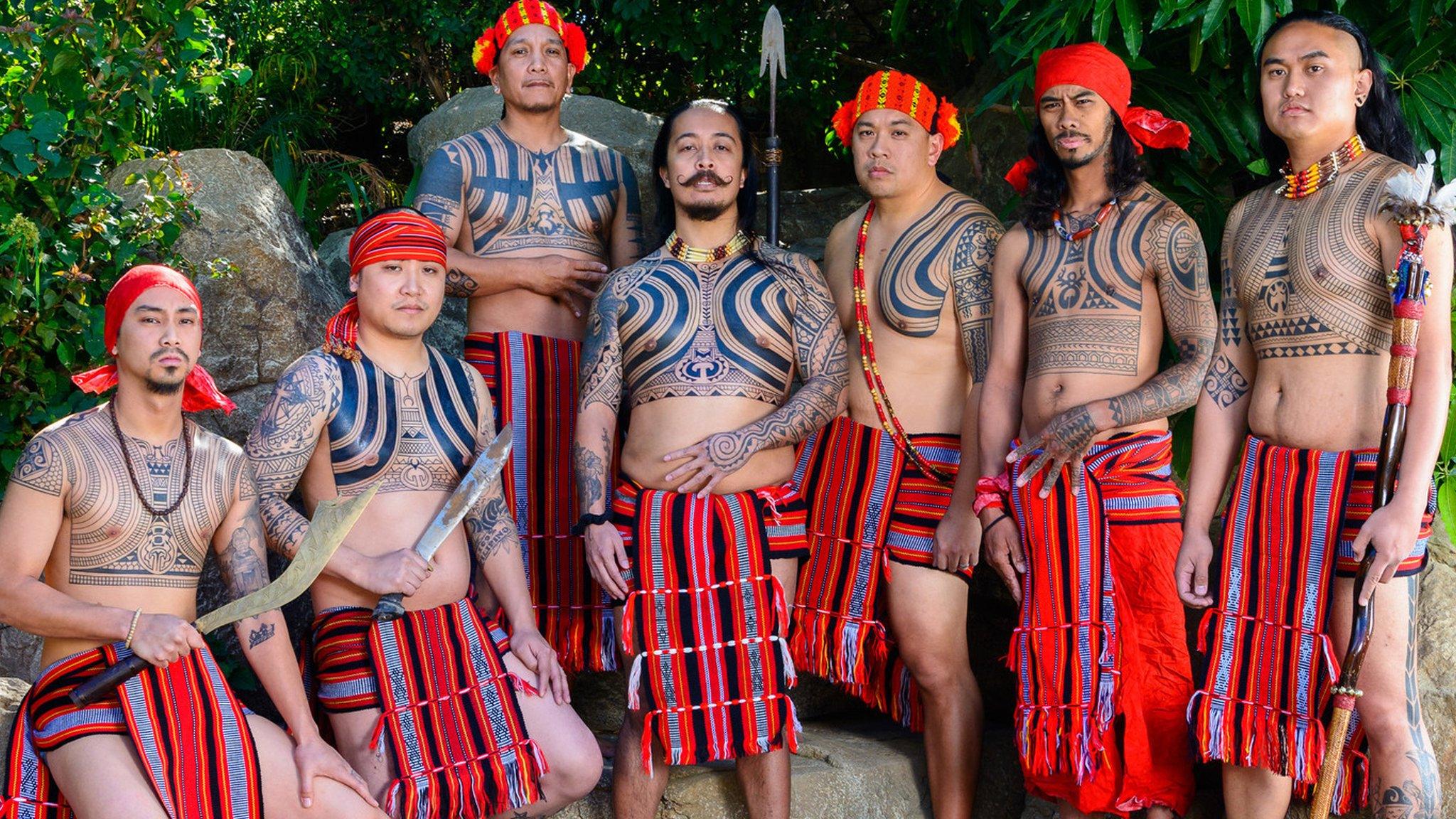
- Published18 July 2017
